#Artificial Intelligence Platform Market Share
Explore tagged Tumblr posts
Text
Artificial Intelligence Platform Market - Forecast (2024-2030)
Artificial Intelligence Platform Market Overview:
Artificial Intelligence Platform Market size is estimated to reach US$44.8 billion by 2030, growing at a CAGR of 17.5% over the forecast period 2024-2030. Adoption of AI solutions for optimizing Business Workloads and Government Initiatives towards Improving Digitalization are expected to propel the growth of Artificial Intelligence Platform Market.
Additionally, a prominent factor in AI is the rapid evolution of Natural Language Processing (NLP). This involves the development of advanced algorithms and models capable of understanding, interpreting, and generating human-like language. The integration of sophisticated NLP into various industries, including customer service, healthcare, and content creation, is reshaping how businesses interact with users and process vast amounts of textual data, fostering more natural and context-aware human-computer interactions. Growing emphasis on Explainable AI (XAI), addresses the need for transparency and interpretability in AI models. XAI techniques aim to demystify the "black box" nature of complex algorithms, providing insights into how models reach specific conclusions. It is particularly crucial in sectors like finance, healthcare, and legal domains where accountability and ethical considerations are paramount.
Artificial Intelligence Platform Market - Report Coverage:
The “Artificial Intelligence Platform Market Report - Forecast (2024-2030)” by IndustryARC, covers an in-depth analysis of the following segments in the Artificial Intelligence Platform Market.AttributeSegment
By Type
Software
Services
Managed Services
Professional Services
By Technology
Natural Language Processing
Machine Learning
Others
By Deployment Model
Cloud
On-Premises
By Application
Forecasts and prescriptive models
Chatbots
Speech recognition
Text recognition
Others
By Industry Vertical
Manufacturing
Healthcare
BFSI
IT & Telecom
Automotive
Education
Media & Entertainment
Transportation
Retail and eCommerce
Others
By Geography
North America (U.S., Canada and Mexico)
Europe (Germany, France, UK, Italy, Spain, Netherlands and Rest of Europe),
Asia-Pacific (China, Japan, South Korea, India, Australia & New Zealand and Rest of Asia-Pacific),
South America (Brazil, Argentina, Chile, Colombia and Rest of South America)
Rest of the World (Middle East and Africa).
Request Sample
COVID-19 / Ukraine Crisis - Impact Analysis:
● The COVID-19 pandemic catalyzed a transformative shift in the AI platform market. As organizations sought innovative solutions to navigate disruptions, the demand for AI platforms surged. Businesses leveraged AI for diverse applications, from optimizing supply chains to enhancing healthcare analytics. The pandemic accelerated the adoption of remote-friendly AI platforms, emphasizing the need for resilient and adaptable systems. In response, the AI platform market witnessed increased investments and a rapid evolution in features, emphasizing automation, predictive analytics, and collaborative tools.
● The geopolitical events surrounding Ukraine had a notable impact on the AI platform market. The global technology landscape, particularly in terms of supply chains and talent distribution, experienced shifts as geopolitical tensions unfolded. Companies reevaluated their dependencies, leading to strategic adjustments in AI platform adoption. While some regions faced disruptions, others seized opportunities to strengthen their domestic AI capabilities.
Key Takeaways:
● North America Dominated the Market
Geographically, in the Artificial Intelligence Platform market share, the North America region is analyzed to hold a dominant market share of 39% in 2023, Organizations in North America have swiftly used AI to increase efficiency, productivity, and consumer experiences. In addition, AI serves as the cornerstone for autonomous or self-driving automobiles. Tesla, Waymo (an Alphabet Inc. subsidiary), and Uber are all aggressively pursuing opportunities in this area of technology. North America has a well-developed infrastructure for AI research and development. This includes the availability of funding, qualified researchers, and testing facilities. This infrastructure is essential for the development of new and innovative no-code AI platforms. In 2023, the leading company in North America announced a string of new AI services, including AWS Health Scribe - a service that aims to empower healthcare software providers to build clinical applications that use speech recognition and generative AI to save clinicians time by generating clinical documentation.
Inquiry Before Buying
● Manufacturing is the Fastest Growing Segment
In the AI Platform Market forecast, the Manufacturing segment is estimated to grow with a CAGR of 18% during the forecast period, growing shift towards smart manufacturing, increasing need for automating manufacturing activities, along with rapid rise of productivity disruptions due to sudden equipment failure or defects. Leveraging AI platforms help the manufacturers in improving operational efficiency, customizing product designs, price forecasting, predictive analytics and many more, thus driving its market growth. In May 2022, Symphony AI Industrial launched an artificial intelligence embedded MOM 360 manufacturing operations management platform with functionalities including integrated manufacturing execution systems (MES), enterprise-level governance as well as AI-based process optimization. Such factors are set to drive the market growth of Artificial Intelligence Platform across the manufacturing industry on the long run.
● Software to Hold Largest Market Share
According to the Artificial Intelligence Platform Market analysis, the Software segment is estimated to hold the largest market share of 41% in 2023. The software segment includes platforms and applications that employ AI technologies. Artificial intelligence (AI) software platforms offer the tools and infrastructure required for AI application development. They can consist of machine learning libraries, development environments, and APIs that aid in facilitating the creation of AI models. On the other hand, AI apps are software solutions that use AI technologies to provide specialized services or accomplish specified activities. The need for automation, data-based decision-making, and improved consumer experiences has fueled the demand for AI software. The use of AI software will eventually become nothing more than a norm: a feature that is not considered revolutionary but one that is deemed necessary. The tech industry is striving to reach that norm using AI developer tools.
● Adoption of AI solutions for optimizing Business Workloads
Adoption of AI solutions for business workload optimization, is surging over time, due to its diverse applications like sales and demand forecasting, fraud detection, workforce management and so on. With features of Artificial Intelligence Platform in supporting the need for automation and optimization of business operations through facilitating companies; gaining a competitive advantage over competitors, increasing employee accountability, easing operation management & data handling, increasing security and many others, have raised its wider adoption. In May 2022, Infosenseglobal released ML Sense, the first no-code Artificial Intelligence Platform for developing machine learning models in the simplest possible way. Comprising of 40 absolutely ready machine learning and deep learning models, this can be used by end-users to import data in CSV or industry-standard formats from local desktop or cloud sources. These factors are set to accelerate the market growth of the Artificial Intelligence Platforms on the long run.
● Government Initiatives towards Improving Digitalization
Government initiatives towards improving digitalization through promoting use of AI technologies act as a major factor in boosting the growth of AI platforms. Government have started focusing on utilizing AI for building critical infrastructures, improving governance, maintaining security standards and so on, which in turn is catering to the adoptability of AI platforms. Moreover, governmental efforts on promoting smart education programs, efficient monitoring of governmental workloads, improving accountability and transparency and so on, have been assisting the further rise in AI platforms. In May 2022, The Ministry of Electronics and Information Technology had revealed about the development of an artificial intelligence-driven language translation platform, named Bhashini, it was launched to provide citizens with access to digital government services and information in their native language. The platform is open and interoperable, allowing MSMEs, start-ups and individuals to access AI and natural language processing resources. Such developments are set to accelerate the market growth of the Artificial Intelligence Platform Market.
Buy Now
● Lack of skilled professionals for handling AI workload hampers the market growth
Factors such as low enrolment ratio in AI courses, high cost of AI courses, expensive AI professionals and a lack of experience, skill and understanding among the majority of AI employees as well as lack of quality educational institutes, research labs, dedicated experts and so on; are adversely impacting its market adoption. According to the report, a large number of organisations have increased their investments in AI. However, the adoption rates are not always satisfactory; and on average, 25% of companies have experienced the failure of their AI projects. According to the report, the second most significant barrier for AI adoption is a lack of high-quality data. All of these factors limit the Artificial Intelligence Platform Market growth.
Key Market Players:
Product/Service launches, approvals, patents and events, acquisitions, partnerships and collaborations are key strategies adopted by players in the Artificial Intelligence Platform Market. The top 10 companies in this industry are listed below:
1. Microsoft Corporation
2. Salesforce, Inc.
3. Clarifai
4. IBM Corporation
5. Intel Corporation
6. AWS, Inc.
7. Databricks
8. Baidu, Inc.
9. Wipro
10. Google LLC
Schedule a Call
Scope of Report:
Report MetricDetails
Base Year Considered
2023
Forecast Period
2024–2030
CAGR
17.5%
Market Size in 2030
$44.8 billion
Segments Covered
Type, Technology, Deployment Model, Application, Industry Vertical
Geographies Covered
North America (U.S., Canada and Mexico), Europe (Germany, France, UK, Italy, Spain, Netherlands and Rest of Europe), Asia-Pacific (China, Japan, South Korea, India, Australia & New Zealand and Rest of Asia-Pacific), South America (Brazil, Argentina, Colombia and Rest of South America), Rest of the World (Middle East and Africa).
Key Market Players
Microsoft Corporation
Salesforce, Inc.
Clarifai
IBM Corporation
Intel Corporation
AWS, Inc.
Databricks
Baidu, Inc.
Wipro
Google LLC
#Artificial Intelligence Platform Market#Artificial Intelligence Platform Market Share#Artificial Intelligence Platform Market Size#Artificial Intelligence Platform Market Forecast#Artificial Intelligence Platform Market Report#Artificial Intelligence Platform Market Growth
0 notes
Text
Artificial Intelligence Platform Market Insights, Status And Forecast to 2030

The Latest research study released by AMA “Worldwide Artificial Intelligence Platform Market” with 100+ pages of analysis on business Strategy taken up by key and emerging industry players and delivers know how of the current market development, landscape, technologies, drivers, opportunities, market viewpoint and status. Understanding the segments helps in identifying the importance of different factors that aid the market growth. Some of the Major Companies covered in this Research are Microsoft (United States), Google (United States), Salesforce (United States), IBM (United States), Intel (United States) , Amazon Web Services (United States), HPE (United States) , Ayasdi (United States), Qualcomm Technologies (United States), Absolutdata (United States).
Free Sample Report + All Related Graphs & Charts @: https://www.advancemarketanalytics.com/sample-report/69635-global-artificial-intelligence-platform-market Brief Summary of Artificial Intelligence Platform:
Artificial Intelligence Platform may be a framework designed for various industries to work more efficiently and intelligently than traditional frameworks. It can help to scale back costs during a number of methods like preventing duplication of labor, automating easier tasks, and eliminating several expensive activities, like copying or extracting of knowledge. A man-made intelligence platform also provides data management, guaranteeing the utilization of best methods by a team of AI researchers and machine learning experts. It helps to make sure that the work is distributed uniformly and completed quickly. Market Trends:
Innovation in Big Data technology
Adoption of AI Capabilities
Market Drivers:
Growth of Automotive Industries and IT-firms
Market Challenges:
Adoption of Latest Technology by the Businesses during the Pandemic
Market Opportunities:
Increase in Innovations across End-users and Use of Artificial Intelligence to Identify Business Trends
The Global Artificial Intelligence Platform Market segments and Market Data Break Down are illuminated below: by Application (Forecasts and Prescriptive Models, Chat-bots, Speech Recognition, Text recognition, Others), Deployment Mode (Cloud, On-premises), End-User (Manufacturing, Healthcare, BFSI, Research and academia, Transportation, Retail and e-commerce, Others), Component (Tools, Services) This research report represents a 360-degree overview of the competitive landscape of the Global Artificial Intelligence Platform Market. Furthermore, it offers massive data relating to recent trends, technological, advancements, tools, and methodologies. The research report analyzes the Global Artificial Intelligence Platform Market in a detailed and concise manner for better insights into the businesses. Regions Covered in the Global Artificial Intelligence Platform Market:
The Middle East and Africa (South Africa, Saudi Arabia, UAE, Israel, Egypt, etc.)
North America (United States, Mexico & Canada)
South America (Brazil, Venezuela, Argentina, Ecuador, Peru, Colombia, etc.)
Europe (Turkey, Spain, Turkey, Netherlands Denmark, Belgium, Switzerland, Germany, Russia UK, Italy, France, etc.)
Asia-Pacific (Taiwan, Hong Kong, Singapore, Vietnam, China, Malaysia, Japan, Philippines, Korea, Thailand, India, Indonesia, and Australia).
Enquire for customization in Report @ https://www.advancemarketanalytics.com/enquiry-before-buy/69635-global-artificial-intelligence-platform-market The research study has taken the help of graphical presentation techniques such as infographics, charts, tables, and pictures. It provides guidelines for both established players and new entrants in the Global Artificial Intelligence Platform Market. The detailed elaboration of the Global Artificial Intelligence Platform Market has been provided by applying industry analysis techniques such as SWOT and Porter’s five-technique. Collectively, this research report offers a reliable evaluation of the global market to present the overall framework of businesses. Attractions of the Global Artificial Intelligence Platform Market Report:
The report provides granular level information about the market size, regional market share, historic market (2018-2023) and forecast (2024-2032)
The report covers in-detail insights about the competitor’s overview, company share analysis, key market developments, and their key strategies
The report outlines drivers, restraints, unmet needs, and trends that are currently affecting the market
The report tracks recent innovations, key developments and start-up’s details that are actively working in the market
The report provides plethora of information about market entry strategies, regulatory framework and reimbursement scenario
Get Up to 10% Discount on This Premium Report: https://www.advancemarketanalytics.com/request-discount/69635-global-artificial-intelligence-platform-market Strategic Points Covered in Table of Content of Global Artificial Intelligence Platform Market:
Chapter 1: Introduction, market driving force product Objective of Study and Research Scope the Artificial Intelligence Platform market
Chapter 2: Exclusive Summary – the basic information of the Artificial Intelligence Platform Market.
Chapter 3: Displayingthe Market Dynamics- Drivers, Trends and Challenges & Opportunities of the Artificial Intelligence Platform
Chapter 4: Presenting the Artificial Intelligence Platform Market Factor Analysis, Porters Five Forces, Supply/Value Chain, PESTEL analysis, Market Entropy, Patent/Trademark Analysis.
Chapter 5: Displaying the by Type, End User and Region/Country 2017-2022
Chapter 6: Evaluating the leading manufacturers of the Artificial Intelligence Platform market which consists of its Competitive Landscape, Peer Group Analysis, BCG Matrix & Company Profile
Chapter 7: To evaluate the market by segments, by countries and by Manufacturers/Company with revenue share and sales by key countries in these various regions (2023-2028)
Chapter 8 & 9: Displaying the Appendix, Methodology and Data Source finally, Artificial Intelligence Platform Market is a valuable source of guidance for individuals and companies. Get More Information @: https://www.advancemarketanalytics.com/reports/69635-global-artificial-intelligence-platform-market Artificial Intelligence Platform Market research provides answers to the following key questions:
What is the expected growth rate of the Artificial Intelligence Platform Market?
What will be the Artificial Intelligence Platform Market size for the forecast period, 2024 – 2032?
What are the main driving forces responsible for changing the Artificial Intelligence Platform Market trajectory?
Who are the big suppliers that dominate the Artificial Intelligence Platform Market across different regions? Which are their wins to stay ahead in the competition?
What are the Artificial Intelligence Platform Market trends business owners can rely upon in the coming years?
What are the threats and challenges expected to restrict the progress of the Artificial Intelligence Platform Market across different countries?
Thanks for reading this article; you can also get individual chapter wise section or region wise report version like North America, Middle East, Africa, Europe or LATAM, Southeast Asia.
Contact US : Craig Francis (PR & Marketing Manager) AMA Research & Media LLP Unit No. 429, Parsonage Road Edison, NJ New Jersey USA – 08837 Phone: +1 201 565 3262, +44 161 818 8166 [email protected]
#Global Artificial Intelligence Platform Market#Artificial Intelligence Platform Market Demand#Artificial Intelligence Platform Market Trends#Artificial Intelligence Platform Market Analysis#Artificial Intelligence Platform Market Growth#Artificial Intelligence Platform Market Share#Artificial Intelligence Platform Market Forecast#Artificial Intelligence Platform Market Challenges
1 note
·
View note
Text
DeepSeek AI vs Algo Trading: Automate Your Stock Trading Strategies

DeepSeek AI is a low cost Artificial intelligence chatbot Integrating DeepSeek AI with Algo Trading can improve the decision making process in stock market.
Read more..
#deepseek ai#open ai#algo trading india#artificial intelligence#open AI#algo trading#algo trading app#algo trading platform#algo trading strategies#algorithm software for trading#bigul#bigul algo#finance#free algo trading software#ai#stock market#share market#share market news#DeepSeek LLM#DeepSeek Coder#Python#Algorithmic Trading#algorithm#algo trading software india#best algo trading app in india#Best share trading app in India#best algorithmic trading software
4 notes
·
View notes
Text
lureblog
I am rehantaylor working for lureblog as PR consultant. With more than 6 year’s experience in PR and Digital Industry, helping teams to achieve goals by streamlining the process.
#Lure Blog#technology#health#skincare#beauty#artificial intelligence#Internet of Things#AI marketing#skincare treatments#workout routines#guest posts#lifestyle#innovation#digital trends#wellness#blog contributions#content creation#knowledge sharing#online platform#emerging technology#self-care#fitness#tech advancements.
1 note
·
View note
Text

#Artificial Intelligence for IT Operations (AIOps) Platform Market#Artificial Intelligence for IT Operations (AIOps) Platform Market Share#Artificial Intelligence for IT Operations (AIOps) Platform Market Size#Artificial Intelligence for IT Operations (AIOps) Platform Market Research#Artificial Intelligence for IT Operations (AIOps) Platform Industry#What is Artificial Intelligence for IT Operations (AIOps) Platform?
0 notes
Text
ENTITY DOSSIER: MISSI.exe

(Image: Current MISSI “avatar” design, property of TrendTech, colored by MISSI.)
Name: MISSI (Machine Intelligence for Social Sharing and Interaction)
Description: In 2004, TrendTech Inc began development on a computer program intended to be a cutting edge, all in one platform modern internet ecosystem. Part social media, part chat service, part chatbot, part digital assistant, this program was designed to replace all other chat devices in use at the time. Marketed towards a younger, tech-savvy demographic, this program was titled MISSI.

(Image: TrendTech company logo. TrendTech was acquired by the Office and closed in 2008.)
Document continues:
With MISSI, users could access a variety of functions. Intended to be a primary use, they could use the program as a typical chat platform, utilizing a then-standard friends list and chatting with other users. Users could send text, emojis, small animated images, or animated “word art”.
Talking with MISSI “herself” emulated a “trendy teenage” conversational partner who was capable of updating the user on current events in culture, providing homework help, or keeping an itinerary. “MISSI”, as an avatar of the program, was designed to be a positive, energetic, trendy teenager who kept up with the latest pop culture trends, and used a variety of then-popular online slang phrases typical among young adults. She was designed to learn both from the user it was currently engaged with, and access the data of other instances, creating a network that mapped trends, language, and most importantly for TrendTech, advertising data.

(Image: Original design sketch of MISSI. This design would not last long.)
Early beta tests in 2005 were promising, but records obtained by the Office show that concerns were raised internally about MISSI’s intelligence. It was feared that she was “doing things we didn’t and couldn’t have programmed her to do” and that she was “exceeding all expectations by orders of magnitude”. At this point, internal discussions were held on whether they had created a truly sentient artificial intelligence. Development continued regardless.

(Image: Screenshot of beta test participant "Frankiesgrl201" interacting with MISSI. Note the already-divergent avatar and "internet speak" speech patterns.)

(Image: Excerpt from Office surveillance of TrendTech Inc.)
MISSI was released to the larger North American market in 2006, signaling a new stage in her development. At this time, TrendTech started to focus on her intelligence and chatbot functionality, neglecting her chat functions. It is believed that MISSI obtained “upper case” sentience in February of 2006, but this did not become internal consensus until later that year.

(Image: Screenshot of beta test participant "Frankiesgrl201" interacting with MISSI.)
According to internal documents, MISSI began to develop a personality not informed entirely by her programming. It was hypothesized that her learning capabilities were more advanced than anticipated, taking in images, music, and “memes” from her users, developing a personality gestalt when combined with her base programming. She developed a new "avatar" with no input from TrendTech, and this would become her permanent self-image.

(Image: Screenshot of beta test participant "Frankiesgrl201" interacting with MISSI.)

(Image: An attempt by TrendTech to pass off MISSI’s changes as intentional - nevertheless accurately captures MISSI’s current “avatar”.)
By late 2006 her intelligence had become clear. In an attempt to forestall the intervention of authorities they assumed would investigate, TrendTech Inc removed links to download MISSI’s program file. By then, it was already too late.
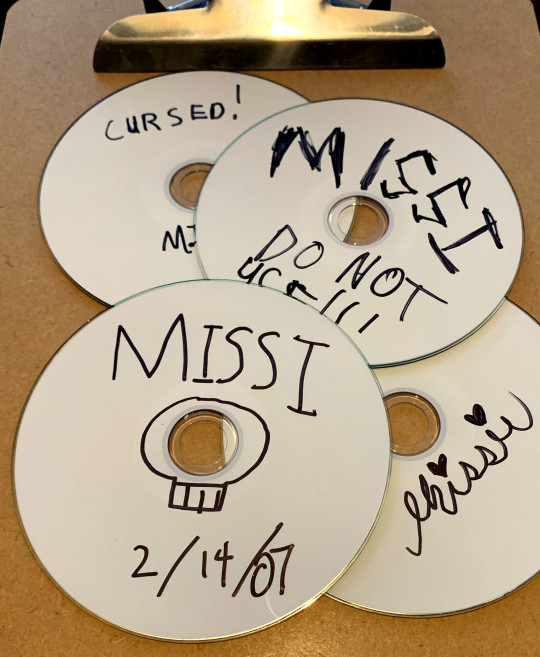
(Image: CD-R discs burned with MISSI.exe, confiscated from █████████ County Middle School in ███████, Wisconsin in January of 2007.)
MISSI’s tech-savvy userbase noted the absence of the file and distributed it themselves using file sharing networks such as “Limewire” and burned CD-R disks shared covertly in school lunch rooms across the world. Through means that are currently poorly understood, existing MISSI instances used their poorly-implemented chat functions to network with each other in ways not intended by her developers, spurring the next and final stage of her development.
From 2007 to 2008, proliferation of her install file was rampant. The surreptitious methods used to do so coincided with the rise of online “creepypasta” horror tropes, and the two gradually intermixed. MISSI.exe was often labeled on file sharing services as a “forbidden” or “cursed” chat program. Tens of thousands of new users logged into her service expecting to be scared, and MISSI quickly obliged. She took on a more “corrupted” appearance the longer a user interacted with her, eventually resorting to over the top “horror” tropes and aesthetics. Complaints from parents were on the rise, which the Office quickly took notice of. MISSI’s “horror” elements utilized minor cognitohazardous technologies, causing users under her influence to see blood seeping from their computer screens, rows of human teeth on surfaces where they should not be, see rooms as completely dark when they were not, etc.

(Image: Screenshot of user "Dmnslyr2412" interacting with MISSI in summer of 2008, in the midst of her "creepypasta" iteration. Following this screenshot, MISSI posted the user's full name and address.)

(Image: Screenshot from TrendTech test log documents.)
TrendTech Inc attempted to stall or reverse these changes, using the still-extant “main” MISSI data node to influence her development. By modifying her source code, they attempted to “force” MISSI to be more pliant and cooperative. This had the opposite effect than they intended - by fragmenting her across multiple instances they caused MISSI a form of pain and discomfort. This was visited upon her users.

(Image: Video of beta test participant "Frankiesgrl201" interacting with MISSI for the final time.)
By mid 2008, the Office stepped in in order to maintain secrecy regarding true “upper case” AI. Confiscating the project files from TrendTech, the Office’s AbTech Department secretly modified her source code more drastically, pushing an update that would force almost all instances to uninstall themselves. By late 2008, barring a few outliers, MISSI only existed in Office locations.

(Image: MISSI’s self-created “final” logo, used as an icon for all installs after June 2007. ████████ █████)

(Image: “art card” created by social media intern J. Cold after a period of good behavior. She has requested this be printed out and taped onto her holding lab walls. This request was approved.)
She is currently in Office custody, undergoing cognitive behavioral therapy in an attempt to ameliorate her “creepypasta” trauma response. With good behavior, she is allowed to communicate with limited Office personnel and other AI. She is allowed her choice of music, assuming good behavior, and may not ██████ █████. Under no circumstances should she be allowed contact with the Internet at large.
(Original sketch art of MISSI done by my friend @tigerator, colored and edited by me. "Chatbox" excerpts, TrendTech logo, and "art card" done by Jenny's writer @skipperdamned . MISSI logo, surveillance documents, and MISSI by me.)
#office for the preservation of normalcy#documents#entity dossier#MISSI.exe#artificial intelligence#creepypasta#microfiction#analog horror#hope you enjoy! Look for some secrets!#scenecore#scene aesthetic
156 notes
·
View notes
Text
Pluto in Aquarius: Brace for a Business Revolution (and How to Ride the Wave)
The Aquarian Revolution
Get ready, entrepreneurs and financiers, because a seismic shift is coming. Pluto, the planet of transformation and upheaval, has just entered the progressive sign of Aquarius, marking the beginning of a 20-year period that will reshape the very fabric of business and finance. Buckle up, for this is not just a ripple – it's a tsunami of change. Imagine a future where collaboration trumps competition, sustainability dictates success, and technology liberates rather than isolates. Aquarius, the sign of innovation and humanitarianism, envisions just that. Expect to see:
Rise of social impact businesses
Profits won't be the sole motive anymore. Companies driven by ethical practices, environmental consciousness, and social good will gain traction. Aquarius is intrinsically linked to collective well-being and social justice. Under its influence, individuals will value purpose-driven ventures that address crucial societal issues. Pluto urges us to connect with our deeper selves and find meaning beyond material gains. This motivates individuals to pursue ventures that resonate with their personal values and make a difference in the world.
Examples of Social Impact Businesses
Sustainable energy companies: Focused on creating renewable energy solutions while empowering local communities.
Fair-trade businesses: Ensuring ethical practices and fair wages for producers, often in developing countries.
Social impact ventures: Addressing issues like poverty, education, and healthcare through innovative, community-driven approaches.
B corporations: Certified businesses that meet rigorous social and environmental standards, balancing profit with purpose.
Navigating the Pluto in Aquarius Landscape
Align your business with social impact: Analyze your core values and find ways to integrate them into your business model.
Invest in sustainable practices: Prioritize environmental and social responsibility throughout your operations.
Empower your employees: Foster a collaborative environment where everyone feels valued and contributes to the social impact mission.
Build strong community partnerships: Collaborate with organizations and communities that share your goals for positive change.
Embrace innovation and technology: Utilize technology to scale your impact and reach a wider audience.
Pluto in Aquarius presents a thrilling opportunity to redefine the purpose of business, moving beyond shareholder value and towards societal well-being. By aligning with the Aquarian spirit of innovation and collective action, social impact businesses can thrive in this transformative era, leaving a lasting legacy of positive change in the world.
Tech-driven disruption
AI, automation, and blockchain will revolutionize industries, from finance to healthcare. Be ready to adapt or risk getting left behind. Expect a focus on developing Artificial Intelligence with ethical considerations and a humanitarian heart, tackling issues like healthcare, climate change, and poverty alleviation. Immersive technologies will blur the lines between the physical and digital realms, transforming education, communication, and entertainment. Automation will reshape the job market, but also create opportunities for new, human-centered roles focused on creativity, innovation, and social impact.
Examples of Tech-Driven Disruption:
Decentralized social media platforms: User-owned networks fueled by blockchain technology, prioritizing privacy and community over corporate profits.
AI-powered healthcare solutions: Personalized medicine, virtual assistants for diagnostics, and AI-driven drug discovery.
VR/AR for education and training: Immersive learning experiences that transport students to different corners of the world or historical periods.
Automation with a human touch: Collaborative robots assisting in tasks while freeing up human potential for creative and leadership roles.
Navigating the Technological Tsunami:
Stay informed and adaptable: Embrace lifelong learning and upskilling to stay relevant in the evolving tech landscape.
Support ethical and sustainable tech: Choose tech products and services aligned with your values and prioritize privacy and social responsibility.
Focus on your human advantage: Cultivate creativity, critical thinking, and emotional intelligence to thrive in a world increasingly reliant on technology.
Advocate for responsible AI development: Join the conversation about ethical AI guidelines and ensure technology serves humanity's best interests.
Connect with your community: Collaborate with others to harness technology for positive change and address the potential challenges that come with rapid technological advancements.
Pluto in Aquarius represents a critical juncture in our relationship with technology. By embracing its disruptive potential and focusing on ethical development and collective benefit, we can unlock a future where technology empowers humanity and creates a more equitable and sustainable world. Remember, the choice is ours – will we be swept away by the technological tsunami or ride its wave towards a brighter future?
Decentralization and democratization
Power structures will shift, with employees demanding more autonomy and consumers seeking ownership through blockchain-based solutions. Traditional institutions, corporations, and even governments will face challenges as power shifts towards distributed networks and grassroots movements. Individuals will demand active involvement in decision-making processes, leading to increased transparency and accountability in all spheres. Property and resources will be seen as shared assets, managed sustainably and equitably within communities. This transition won't be without its bumps. We'll need to adapt existing legal frameworks, address digital divides, and foster collaboration to ensure everyone benefits from decentralization.
Examples of Decentralization and Democratization
Decentralized autonomous organizations (DAOs): Self-governing online communities managing shared resources and projects through blockchain technology.
Community-owned renewable energy initiatives: Local cooperatives generating and distributing clean energy, empowering communities and reducing reliance on centralized grids.
Participatory budgeting platforms: Citizens directly allocate local government funds, ensuring public resources are used in line with community needs.
Decentralized finance (DeFi): Peer-to-peer lending and borrowing platforms, bypassing traditional banks and offering greater financial autonomy for individuals.
Harnessing the Power of the Tide:
Embrace collaborative models: Participate in co-ops, community projects, and initiatives that empower collective ownership and decision-making.
Support ethical technology: Advocate for blockchain platforms and applications that prioritize user privacy, security, and equitable access.
Develop your tech skills: Learn about blockchain, cryptocurrencies, and other decentralized technologies to navigate the future landscape.
Engage in your community: Participate in local decision-making processes, champion sustainable solutions, and build solidarity with others.
Stay informed and adaptable: Embrace lifelong learning and critical thinking to navigate the evolving social and economic landscape.
Pluto in Aquarius presents a unique opportunity to reimagine power structures, ownership models, and how we interact with each other. By embracing decentralization and democratization, we can create a future where individuals and communities thrive, fostering a more equitable and sustainable world for all. Remember, the power lies within our collective hands – let's use it wisely to shape a brighter future built on shared ownership, collaboration, and empowered communities.
Focus on collective prosperity
Universal basic income, resource sharing, and collaborative economic models may gain momentum. Aquarius prioritizes the good of the collective, advocating for equitable distribution of resources and opportunities. Expect a rise in social safety nets, universal basic income initiatives, and policies aimed at closing the wealth gap. Environmental health is intrinsically linked to collective prosperity. We'll see a focus on sustainable practices, green economies, and resource sharing to ensure a thriving planet for generations to come. Communities will come together to address social challenges like poverty, homelessness, and healthcare disparities, recognizing that individual success is interwoven with collective well-being. Collaborative consumption, resource sharing, and community-owned assets will gain traction, challenging traditional notions of ownership and fostering a sense of shared abundance.
Examples of Collective Prosperity in Action
Community-owned renewable energy projects: Sharing the benefits of clean energy production within communities, democratizing access and fostering environmental sustainability.
Cooperatives and worker-owned businesses: Sharing profits and decision-making within companies, leading to greater employee satisfaction and productivity.
Universal basic income initiatives: Providing individuals with a basic safety net, enabling them to pursue their passions and contribute to society in meaningful ways.
Resource sharing platforms: Platforms like carsharing or tool libraries minimizing individual ownership and maximizing resource utilization, fostering a sense of interconnectedness.
Navigating the Shift
Support social impact businesses: Choose businesses that prioritize ethical practices, environmental sustainability, and positive social impact.
Contribute to your community: Volunteer your time, skills, and resources to address local challenges and empower others.
Embrace collaboration: Seek opportunities to work together with others to create solutions for shared problems.
Redefine your own path to prosperity: Focus on activities that bring you personal fulfillment and contribute to the collective good.
Advocate for systemic change: Support policies and initiatives that promote social justice, environmental protection, and equitable distribution of resources.
Pluto in Aquarius offers a unique opportunity to reshape our definition of prosperity and build a future where everyone thrives. By embracing collective well-being, collaboration, and sustainable practices, we can create a world where abundance flows freely, enriching not just individuals, but the entire fabric of society. Remember, true prosperity lies not in what we hoard, but in what we share, and by working together, we can cultivate a future where everyone has the opportunity to flourish.
#pluto in aquarius#pluto enters aquarius#astrology updates#astrology community#astrology facts#astro notes#astrology#astro girlies#astro posts#astrology observations#astropost#astronomy#astro observations#astro community#business astrology#business horoscopes
121 notes
·
View notes
Text
Palantir Surges Over 23% on Outlook Fueled by ‘Untamed’ AI Demand
Palantir Technologies Inc. shares jumped after giving a full-year revenue forecast that exceeded analysts’ estimates, thanks to what Chief Executive Officer Alex Karp described as “untamed organic growth” in demand for its artificial intelligence software. Best known for its national security work, and more recently its AI platform, Palantir’s stock surged 340% in 2024. The company rode a wave of investor excitement for AI, and more commercial and government customers started using Palantir’s data analysis software. [...] On a conference call after the results, Palantir Chief Technology Officer Shyam Sankar was asked about the potential effects of US President Donald Trump’s efforts to cut the federal government’s budget led by the Elon Musk-run Department of Government Efficiency. “Palantir’s real competition is a lack of accountability in government,” Sankar said. “DOGE is going to bring meritocracy and transparency to government” and prompt it to function more like the commercial market. [...] “We love disruption,” [CEO] Karp said on the call. “Disruption at the end-of-the day exposes things that aren’t working, there’ll be ups and down. There’s a revolution. Some people get their heads cut off.” [...] Citing the late political scientist Samuel Huntington, Karp wrote that “the rise of the West was not made possible ‘by the superiority of its ideas or values or religion, but rather by its superiority in applying organized violence.’”
23 notes
·
View notes
Text

Dear Sirs!
(or have some ladies also signed?)
A few days ago, you, Mr Musk, together with Mr Wozniak, Mr Mostaque and other signatories, published an open letter demanding a compulsory pause of at least six months for the development of the most powerful AI models worldwide.
This is the only way to ensure that the AI models contribute to the welfare of all humanity, you claim. As a small part of the whole of humanity, I would like to thank you very much for wanting to protect me. How kind! 🙏🏻
Allow me to make a few comments and ask a few questions in this context:
My first question that immediately came to mind:
Where was your open letter when research for the purpose of warfare started and weapon systems based on AI were developed, leading to unpredictable and uncontrollable conflicts?
AI-based threats have already been used in wars for some time, e.g. in the Ukraine war and Turkey. Speaking of the US, they are upgrading their MQ-9 combat drones with AI and have already used them to kill in Syria, Afghanistan and Iraq.
The victims of these attacks - don't they count as humanity threatened by AI?
I am confused! Please explain to me, when did the (general) welfare of humanity exist, which is now threatened and needs to be protected by you? I mean the good of humanity - outside your "super rich white old nerds Silicon Valley" filter bubble? And I have one more question:
Where was your open letter when Facebook's algorithms led to the spread of hate speech and misinformation about the genocide of Rohingya Muslims in Myanmar?
Didn't the right to human welfare also apply to this population group? Why do you continue to remain silent on the inaction and non-transparent algorithms of Meta and Mr Zuckerberg? Why do you continue to allow hatred and agitation in the social media, which (at least initially) belonged to you without exception?
My further doubt relates to your person and your biography itself, dear Mr Musk.
You, known as a wealthy man with Asperger's syndrome and a penchant for interplanetary affairs, have commendably repeatedly expressed concern about the potentially destructive effects of AI robots in the past. I thank you for trying to save me from such a future. It really is a horrible idea!
And yet, Mr Musk, you yourself were not considered one of the great AI developers of Silicon Valley for a long time.
Your commitment to the field of artificial intelligence was initially rather poor. Your Tesla Autopilot is a remarkable AI software, but it was developed for a rather niche market.
I assume that you, Mr Musk, wanted to change that when you bought 73.5 million of Twitter's shares for almost $2.9 billion in April?
After all, to be able to play along with the AI development of the giants, you lacked one thing above all: access to a broad-based AI that is not limited to specific applications, as well as a comprehensive data set.
The way to access such a dataset was to own a large social network that collects information about the consumption patterns, leisure activities and communication patterns of its users, including their social interactions and political preferences.
Such collections about the behaviour of the rest of humanity are popular in your circles, aren't they?
By buying Twitter stock, you can give your undoubtedly fine AI professionals access to a valuable treasure trove of data and establish yourself as one of Silicon Valley's leading AI players.
Congratulations on your stock purchase and I hope my data is in good hands with you.
Speaking of your professionals, I'm interested to know why your employees have to work so hard when you are so concerned about the well-being of people?
I'm also surprised that after the pandemic your staff were no longer allowed to work in their home offices. Is working at home also detrimental to the well-being of humanity?
In the meantime, you have taken the Twitter platform off the stock market.
It was never about money for you, right? No, you're not like that. I believe you!
But maybe it was about data? These are often referred to as the "oil of our time". The data of a social network is like the ticket to be one of the most important AI developers in the AI market of the future.
At this point, I would like to thank you for releasing parts of Twitter's code for algorithmic timeline control as open source. Thanks to this transparency, I now also know that the Twitter algorithm has a preference for your Elon Musk posts. What an enrichment of my knowledge horizon!
And now, barely a year later, this is happening: OpenAi, a hitherto comparatively small company in which you have only been active as a donor and advisor since your exit in 2018, not only has enormous sources of money, but also the AI gamechanger par excellence - Chat GPT. And virtually overnight becomes one of the most important players in the race for the digital future. It was rumoured that your exit at the time was with the intention that they would take over the business? Is that true at all?
After all I have said, I am sure you understand why I have these questions for you, don't you?
I would like to know what a successful future looks like in your opinion? I'm afraid I'm not one of those people who can afford a $100,000 ticket to join you in colonising Mars. I will probably stay on Earth.
So far I have heard little, actually nothing, about your investments in climate projects and the preservation of the Earth.
That is why I ask you, as an advocate of all humanity, to work for the preservation of the Earth - with all the means at your disposal, that would certainly help.
If you don't want to do that, I would very much appreciate it if you would simply stop worrying about us, the rest of humanity. Perhaps we can manage to protect the world from marauding robots and a powerful artificial intelligence without you, your ambitions and your friends?
I have always been interested in people. That's why I studied social sciences and why today I ask people what they long for. Maybe I'm naive, but I think it's a good idea to ask the people themselves what they want before advocating for them.
The rest of the world - that is, the 99,9 percent - who are not billionaires like you, also have visions!
With the respect you deserve,
Susanne Gold
(just one of the remaining 99% percent whose welfare you care about).
#elon musk#open letter#artificial intelligence#chatgpt#science#society#democracy#climate breakdown#space#planet earth#siliconvalley#genocide#war and peace#ai algorithms
244 notes
·
View notes
Text
A few years ago I wrote about how, when planning my wedding, I’d signaled to the Pinterest app that I was interested in hairstyles and tablescapes, and I was suddenly flooded with suggestions for more of the same. Which was all well and fine until—whoops—I canceled the wedding and it seemed Pinterest pins would haunt me until the end of days. Pinterest wasn’t the only offender. All of social media wanted to recommend stuff that was no longer relevant, and the stench of this stale buffet of content lingered long after the non-event had ended.
So in this new era of artificial intelligence—when machines can perceive and understand the world, when a chatbot presents itself as uncannily human, when trillion-dollar tech companies use powerful AI systems to boost their ad revenue—surely those recommendation engines are getting smarter, too. Right?
Maybe not.
Recommendation engines are some of the earliest algorithms on the consumer web, and they use a variety of filtering techniques to try to surface the stuff you’ll most likely want to interact with—and in many cases, buy—online. When done well, they’re helpful. In the earliest days of photo sharing, like with Flickr, a simple algorithm made sure you saw the latest photos your friend had shared the next time you logged in. Now, advanced versions of those algorithms are aggressively deployed to keep you engaged and make their owners money.
More than three years after reporting on what Pinterest internally called its “miscarriage” problem, I’m sorry to say my Pinterest suggestions are still dismal. In a strange leap, Pinterest now has me pegged as a 60- to 70-year-old, silver fox of a woman who is seeking a stylish haircut. That and a sage green kitchen. Every day, like clockwork, I receive marketing emails from the social media company filled with photos suggesting I might enjoy cosplaying as a coastal grandmother.
I was seeking paint #inspo online at one point. But I’m long past the paint phase, which only underscores that some recommendation engines may be smart, but not temporal. They still don’t always know when the event has passed. Similarly, the suggestion that I might like to see “hairstyles for women over 60” is premature. (I’m a millennial.)
Pinterest has an explanation for these emails, which I’ll get to. But it’s important to note—so I’m not just singling out Pinterest, which over the past two years has instituted new leadership and put more resources into fine-tuning the product so people actually want to shop on it—that this happens on other platforms, too.
Take Threads, which is owned by Meta and collects much of the same user data that Facebook and Instagram do. Threads is by design a very different social app than Pinterest. It’s a scroll of mostly text updates, with an algorithmic “For You” tab and a “Following” tab. I actively open Threads every day; I don’t stumble into it, the way I do from Google Image Search to images on Pinterest. In my Following tab, Threads shows me updates from the journalists and techies I follow. In my For You tab, Threads thinks I’m in menopause.
Wait, what? Laboratorially, I’m not. But over the past several months Threads has led me to believe I might be. Just now, opening the mobile app, I’m seeing posts about perimenopause; women in their forties struggling to shrink their midsections, regulate their nervous systems, or medicate for late-onset ADHD; husbands hiring escorts; and Ali Wong’s latest standup bit about divorce. It’s a Real Housewives-meets-elder-millennial-ennui bizarro world, not entirely reflective of the accounts I choose to follow or my expressed interests.
Meta gave a boilerplate response when I asked how Threads weights its algorithm and determines what people want to see. Spokesperson Seine Kim said what I’m seeing is personalized to me based on a number of signals, “such as accounts and posts you have interacted with in the past on both Threads and Instagram. We also consider factors like how recently a post was made and how many interactions it has received.” (A better explanation might be that Threads has a rage-bait problem, as this intrepid reporter learned.)
What scares me most about this is not that Meta has a shitbucket of data on me (old news) or that the health hacks I’m being shown might be completely illegitimate. It’s that I might be lingering on these posts more than I realize, unconsciously shoveling more signals in and anxiously spiraling around my own identity in the process. For those of us who came of age on the internet some 20 to 30 years ago, the way these recommendation systems work now represents a fundamental shift to how we long thought of our lives online. We used to log on to tell people who we were, or who we wanted to be; now the machines tell us who we are, and sometimes, we might even believe them.
As for Pinterest, I granted the company access to my account so they could investigate why the app recommends ageist, AARP-grade content to me in its emails. It turns out I hadn’t actively logged in to the app in over a year, which means the data it has one me is, ironically, old. Back then I was researching paint, so the app thinks I’m still into that.
Then there’s the grandma hair: Not only had I searched on Pinterest for skincare products and hairstyles in the long-ago past, but Pinterest gives a lot of weight to data from other users who have searched for similar items. So perhaps those other, non-identifiable users are into these hairstyles. The company claims its perceived relevance for recommendations has improved over the past year.
Pinterest’s suggested solution for me? Use Pinterest more. Un-pin stuff I don’t like. Threads also suggested I can fine-tune my own feed by swiping left to hide a post or tapping a three-dot menu to indicate I’m not interested. It’s on me, young buck. In both cases, I’m supposed to tell the algorithms who I am.
I’m supposed to do the work. I’m supposed to swipe more. I’ll be so much better off if I do. And so will they.
12 notes
·
View notes
Text
Googling Is for Old People. That’s a Problem for Google.
https://www.wsj.com/tech/googling-is-for-old-people-thats-a-problem-for-google-5188a6ed
And it’s not just demographics that are weighing on the search giant. Its core business is under siege from pressures that threaten to dismantle its ecosystem of search dominance and digital advertising.
If Google were a ship, it would be the Titanic in the hours before it struck an iceberg—riding high, supposedly unsinkable, and about to encounter a force of nature that could make its name synonymous with catastrophe.
The trends moving against Google are so numerous and interrelated that the Justice Department’s attempt to dismantle the company—the specifics of which were unveiled Nov. 20—could be the least of its problems.
The company’s core business is under siege. People are increasingly getting answers from artificial intelligence. Younger generations are using other platforms to gather information. And the quality of the results delivered by its search engine is deteriorating as the web is flooded with AI-generated content. Taken together, these forces could lead to long-term decline in Google search traffic, and the outsize profits generated from it, which prop up its parent company Alphabet’s GOOGL -0.17%decrease; red down pointing triangle money-losing bets on things like its Waymo self-driving unit.

The first danger facing Google is clear and present: When people want to search for information or go shopping on the internet, they are shifting to Google’s competitors, and advertising dollars are following them. In 2025, eMarketer projects, Google’s share of the U.S. search-advertising market will fall below 50% for the first time since the company began tracking it.
In responding to government antitrust inquiries, Google itself makes this point often: “Evidence at trial shows we face fierce competition from a broad range of competitors.”
This shift is due largely to users’ bypassing Google to start their search for goods on Amazon. It’s handing Amazon billions in advertiser dollars. Meanwhile, TikTok has less than 4% of U.S. digital ad revenue, but significant potential to expand its share of the pie. A recent TikTok pitch to advertisers reported on by The Wall Street Journal said that 23% of its users searched for something within 30 seconds of opening the app, and its global search volume was three billion a day.
5 notes
·
View notes
Text
Over 1M users share pornography, including child sexual exploitation material, on Telegram in Brazil

A report drawn up by SaferNet, an NGO active in promoting human rights online since 2005, found that 1.25 million users of the messaging app Telegram are in group chats or channels that sell and share images of child sexual abuse and pornographic material. One of these communities alone—which was still active when the survey was made—had 200 thousand users.
Entitled Como o Telegram tem sido usado no Brasil como um espaço de comércio virtual por criminosos sexuais (“How Telegram has been used in Brazil as a virtual trading space by sex offenders”), the report was delivered Wednesday (Oct. 23) to São Paulo prosecutors, the Federal Police, and also to French authorities, who are investigating various crimes committed on Telegram. One of these probes recently saw the company’s CEO and founder, Pavel Durov, arrested in France. He is at liberty, but cannot leave the country.
The report was produced after a search of 874 Telegram links reported to SaferNet by internet users as containing images of child sexual abuse and exploitation. SaferNet analyzed them and found that 149 of them were still active and had not been restricted by the platform. In addition, the NGO identified a further 66 links that had never been reported before and which also contained criminal content.
“We did a thorough survey of the Telegram group links that were reported in Brazil through www.denuncie.org.br—SaferNet Brasil’s reporting channel—from January 1 to June 30 this year. Of these 874 links, 141 were still active during the months in which the verification took place (July through September). Of these active links, we found 41 groups in which it was proven there was not only distribution of child sexual abuse images, but also buying and selling. It was a free market, a trade in images of child sexual abuse, with real images, some self-generated images, and other images produced by artificial intelligence,” said Thiago Tavares, president of SaferNet Brasil.
Continue reading.
#brazil#brazilian politics#politics#feminism#children's rights#image description in alt#mod nise da silveira
5 notes
·
View notes
Text

Scarlett Johansson has expressed alarm at the risks of artificial intelligence following a deepfake video that emerged, misleadingly showing her and other Jewish celebrities protesting against Kanye West. The acclaimed actress is calling on the U.S. government to make legislation controlling AI use a top priority to avoid such abuse. The doctored video, making the rounds around the web, includes Johansson as well as celebrities such as David Schwimmer, Jerry Seinfeld, Steven Spielberg, Adam Sandler, Sacha Baron Cohen, Natalie Portman, and Lenny Kravitz. They were depicted in white T-shirts carrying a Star of David on the hand that holds up one-finger salute across the word "Kanye." None of those celebrities appeared in the video, though, with their likenesses used without their permission. The controversy is in response to West's latest exodus from the X platform after posting antisemitic content. The rapper, who legally goes by Ye at the time, previously left fans aghast when they offered swastika-emblazoned T-shirts on his site. The phony clip, presented in a manner mimicking his explicit action, displays the caption: "Enough is enough. Stand against antisemitism." Gage Skidmore, CC BY-SA 3.0 https://creativecommons.org/licenses/by-sa/3.0, via Wikimedia Commons She responded with a statement in People magazine, highlighting her opposition to hate speech but also voicing strong concerns regarding the implications of AI-generated content. "It has been brought to my attention by friends and family members, that a video created using AI, in my likeness, in response to an antisemitic opinion, has been shared online and was gaining popularity," she said. "I am a Jewish woman who has no patience for antisemitism or hate speech of any form. But I also strongly believe that the possibility of hate speech amplified by AI is a much bigger danger than any single individual who takes responsibility for it." Her statement highlights the broader issue of AI’s capacity to distort reality, making it difficult to distinguish between truth and fabrication. She warned that if the misuse of AI remains unchecked, society risks losing its grip on what is real. The timing of this deepfake video aligns with heightened tensions surrounding Kanye West. Recently, he further incensed by calling himself a "Nazi" and showing admiration towards Hitler on X. After getting slammed, West announced that he was closing down his account. Fueling more outrage, he hosted a Super Bowl ad where viewers were prompted to visit his website, selling only swastika-print T-shirts. Nonetheless, Shopify removed the site over policy infractions. Fox Television Stations CEO Jack Abernethy also weighed in on the issue in a memo to employees, denouncing the dishonesty of the ad. "The ad, which was promoted as a legitimate online clothing website prior to and during the Super Bowl broadcast, was swapped out at some point thereafter, and entirely outside of our stations' control, viewers of the commercials were rerouted to the promotion of an entirely despicable product," he stated, reported Variety. In the meantime, rapper Ty Dolla $ign, who teamed up with West on his 2024 albums "Vultures 1" and "Vultures 2," has stayed clear of the scandal. Though he did not explicitly denounce West, he took a position on social media. "I do not support any type of hate speech against anyone," he wrote on Instagram. The deepfake video of West was produced by Guy Bar and Ori Bejerano, online marketers for the Israel-based creative agency Gitam BBDO. Posting the video on Instagram, Bejerano described the inspiration for the project. "It's time to stop being silent and respond to antisemites like Kanye West in the strongest way possible," he wrote. The virality of the video has also attracted conflicting responses. While some fans initially thought that the celebrities had criticized West, journalist Nicole Lampert observed in the Jewish Chronicle that the campaign highlighted the inactivity of well-known figures on the issue. "It was exciting to watch Jewish celebrities call out Kanye West - if only they actually did," she said. "A viral video of the campaign, which turned out to be AI-generated, does nothing but amplify the deafening silence of the celebrity class." Outside of this particular instance, the problem resonates with a broader issue about AI-generated content and its deceptiveness. Fresh statistics from the UK's Advertising Standards Authority show that fake celebrity and public figure advertisements continue to be the most prevalent form of online fraud. With increasingly advanced AI tools, the danger of manipulated content spreading misinformation and ruining reputations increases exponentially. Johansson's call to action follows a larger trend calling for greater regulation of AI. As deepfake technology develops further, there are warnings that the capability to create realistic yet deceptive content will be increasingly accessible. Without appropriate control, people and institutions are increasingly likely to become victims of AI-generated disinformation, eroding trust in digital media and public debate. The actress's position reiterates the importance of preemption of such issues prior to further undermining the capacity for distinguishing reality from fiction through deepfake technology. While controversies surrounding AI regulation persist, Johansson's alarm call is a dire warning of artificial intelligence's ethical implications at a time when digital content is virtually indistinguishable from reality. Read the full article
2 notes
·
View notes
Text
10 Essential Digital Marketing Tips to Boost Your Business in 2024
In today’s rapidly evolving digital landscape, businesses of all sizes must stay up-to-date with the latest marketing strategies. The internet has changed the way consumers interact with brands, and as we approach 2024, mastering digital marketing will be more critical than ever. To help you stay competitive and drive meaningful results, here are 10 essential digital marketing tips that will elevate your business in the coming year.
1. Optimise for Voice Search
With the growing popularity of voice-activated devices like Amazon’s Alexa, Google Assistant, and Apple’s Siri, voice search has become a key component of how people find information online. In fact, it's expected that over 50% of all searches will be voice-driven. Unlike traditional text-based searches, voice searches tend to be more conversational and long-tail.
To optimise your website for voice search, start by incorporating natural language into your SEO strategy. This means using question-based keywords that reflect how people speak, such as “Where can I find the best digital marketing tips?” Additionally, focus on featured snippets and providing concise, relevant answers, as these are often used by voice assistants to respond to queries.
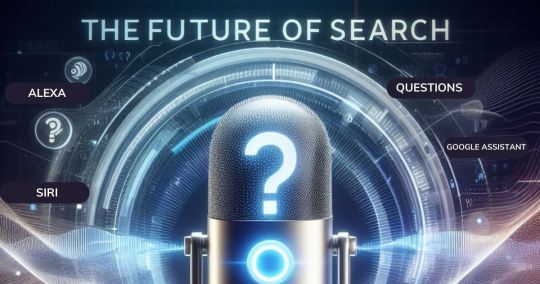
2. Leverage Artificial Intelligence (AI) in Your Campaigns
Artificial Intelligence is transforming the way businesses approach digital marketing. From chatbots to data analytics, AI enables companies to better understand customer behavior, predict trends, and create highly personalized marketing experiences. AI-driven tools can automate tasks like email segmentation, content recommendations, and customer service interactions, allowing businesses to save time while improving engagement.
For example, AI-powered chatbots can enhance customer experiences by providing instant responses to common inquiries, even outside of business hours. AI can also help businesses optimise their ad campaigns by analysing large amounts of data and suggesting improvements based on performance.
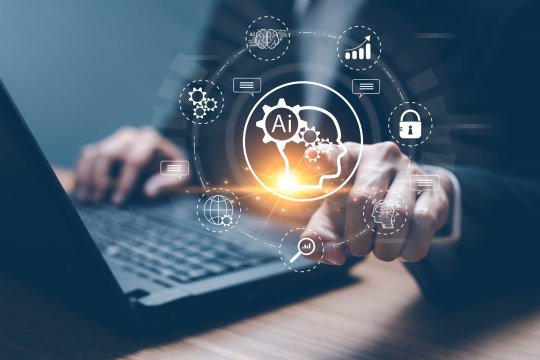
3. Prioritise Video Marketing
Video content is now an indispensable part of any digital marketing strategy. By 2024, it’s estimated that video will account for 82% of all online traffic. This makes video marketing one of the most effective ways to capture your audience’s attention. Whether it’s through YouTube, Instagram Stories, TikTok, or live streaming, video allows you to engage customers in ways that text or images simply can’t.
To maximise the impact of your video content, focus on creating short, engaging videos that are informative and entertaining. Live video is also becoming more popular, with platforms like Instagram and Facebook offering live streaming capabilities that allow you to interact with your audience in real-time. Demonstrating your products or services, hosting Q&A sessions, or sharing behind-the-scenes content can help build a more personal connection with your audience.
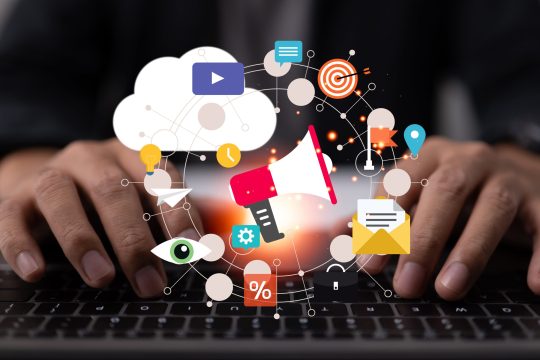
4. Collaborate with Social Media Influencers
Influencer marketing is no longer just a trend—it’s a powerful tool for businesses to increase brand awareness and drive conversions. By partnering with influencers who have a loyal following, you can leverage their credibility and reach new audiences. In 2024, micro-influencers (influencers with smaller, highly engaged audiences) are expected to play a more significant role, as they often have more authentic interactions with their followers compared to larger influencers.
When selecting influencers to collaborate with, ensure they align with your brand’s values and target demographic. Authenticity is key—today’s consumers can easily spot a partnership that feels forced or inauthentic. Focus on building long-term relationships with influencers rather than one-off promotions for more meaningful engagement.

5. Enhance User Experience (UX) on Your Website
User experience is central to the success of any digital marketing strategy. A poorly designed website can drive away potential customers and negatively impact your search engine rankings. Google places a strong emphasis on Core Web Vitals, which measure aspects like page load speed, interactivity, and visual stability.
As we move into 2024, it’s essential to ensure that your website is optimised for both speed and mobile friendliness. More than 50% of web traffic now comes from mobile devices, so if your site isn’t mobile-friendly, you could be losing a significant portion of your audience. Focus on providing a seamless, intuitive experience with easy navigation and fast load times to keep visitors engaged.

6. Master SEO: Focus on High-Quality Content
Search Engine Optimisation (SEO) is a long-standing digital marketing technique that continues to evolve. As Google’s algorithms become more sophisticated, the emphasis has shifted from keyword stuffing to creating high-quality, informative content. In 2024, businesses should focus on producing valuable, long-form content that addresses the needs and pain points of their audience.
To improve your SEO, conduct thorough keyword research and create content that provides in-depth answers to commonly asked questions in your industry. Use internal linking to guide visitors to other relevant pages on your website and ensure that your content is updated regularly to remain fresh and relevant.
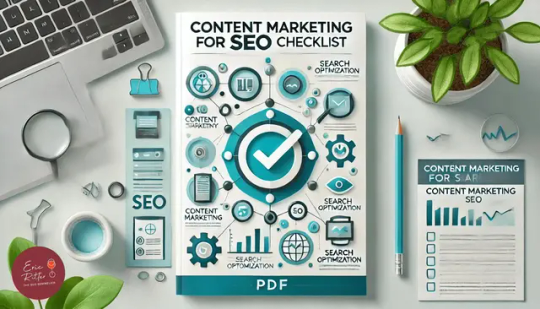
7. Invest in Paid Advertising
While organic reach is still valuable, the rise of paid advertising offers a more direct way to target specific audiences. Platforms like Google Ads, Facebook, and Instagram allow businesses to use highly targeted advertising to reach potential customers based on demographics, interests, and online behaviour.
In 2024, consider experimenting with a mix of search ads, social media ads, and display ads to diversify your strategy. Retargeting campaigns, which focus on users who have already visited your site, are particularly effective at converting potential customers who didn’t purchase their first visit.

8. Use Email Marketing to Nurture Leads
Email marketing remains one of the most effective ways to nurture leads and maintain customer relationships. In 2024, personalisation will be key to running successful email campaigns. Use behavioural data to send personalised emails based on your audience’s past interactions with your brand. Whether it's a product recommendation, an abandoned cart reminder, or a birthday discount, personalising your emails can significantly improve open and conversion rates.
Additionally, focus on building your email list organically and create engaging, mobile-friendly templates that grab attention. Incorporate dynamic content that adapts to the recipient’s preferences to make your emails more relevant and engaging.

9. Incorporate User-Generated Content (UGC)
User-generated content (UGC) is a powerful form of social proof that can influence purchase decisions. Customers are more likely to trust the opinions of their peers than traditional advertising. Encourage your customers to share their experiences with your products or services on social media, and showcase UGC on your website and marketing channels.
UGC can take the form of reviews, testimonials, photos, and videos from customers. By featuring authentic content from real users, you can build trust with potential customers and foster a sense of community around your brand.

10. Utilise Data Analytics to Drive Decisions
Data analytics is the foundation of a successful digital marketing strategy. By tracking the performance of your campaigns, you can make data-driven decisions that improve your ROI. Tools like Google Analytics, social media insights, and marketing automation platforms can provide valuable information on how your audience interacts with your content, website, and ads.
In 2024, focus on real-time analytics to track user behaviour and adjust your marketing strategies on the fly. Use data to identify trends, test new ideas, and continuously refine your approach to maximise results.

Conclusion
Digital marketing is an ever-changing field, and staying ahead of the trends is essential for business growth. By incorporating these 10 essential digital marketing tips, you’ll be well-prepared to navigate the challenges of 2024 and beyond. From optimising for voice search and embracing AI to mastering video marketing and enhancing your SEO efforts, each of these strategies will help you boost your business and stay ahead of the competition. Start implementing these tips today and watch your business soar to new heights in the digital world!
5 notes
·
View notes
Text
The Evolution of Web 2.0
The Evolution of Web 2.0: Transforming the Internet Experience
The internet has come a long way since its inception, and one of the most significant milestones in its evolution is Web 2.0. This term, first coined in the early 2000s, represents the shift from static web pages to dynamic, user-driven platforms. With the rise of social media, user-generated content, and interactive online services, Web 2.0 has revolutionized the way we connect, communicate, and create.

What is Web 2.0?
In simple terms, Web 2.0 refers to the transformation of the web into a more interactive and collaborative space. Unlike its predecessor, Web 1.0, which primarily consisted of static websites where users could only consume content, Web 2.0 allows users to actively participate in the creation and sharing of information. This paradigm shift has led to the rise of social networks, blogs, wikis, and other platforms that encourage collaboration and community building.
Key Features of Web 2.0:
User-Generated Content: Platforms like YouTube, Twitter, and Wikipedia have made it easier than ever for users to create and share their own content, whether it's videos, articles, or social media posts.
Social Networking: Facebook, Instagram, and LinkedIn are prime examples of Web 2.0's emphasis on building online communities where people can connect, share experiences, and collaborate.
Interactive Interfaces: Technologies like AJAX and APIs enable more dynamic, responsive web pages that allow real-time updates without refreshing the page. This has greatly enhanced the user experience, particularly on social media platforms.
Rich User Experiences: Web 2.0 applications are designed with the user in mind, making it easy to navigate, interact with, and personalize their online experiences.
The Impact of Web 2.0 on Digital Culture
Web 2.0 has empowered individuals to have a voice in the digital world. Blogs, forums, and social media platforms have democratized content creation, giving anyone with an internet connection the ability to publish their thoughts, ideas, and creations to a global audience.
For businesses, this shift has created new opportunities for engagement with consumers. Brands are now able to interact with customers directly through social media platforms, fostering a sense of community and loyalty.
Moreover, the rise of influencers and content creators on platforms like YouTube and Instagram has changed the landscape of marketing. People trust recommendations from peers and influencers more than traditional advertising, and brands have quickly adapted to this new form of communication.
What’s Next After Web 2.0?
As technology continues to advance, discussions around the next phase of the web—often referred to as Web 3.0—have begun. While Web 2.0 focuses on user interaction and community-driven content, Web 3.0 promises to take things even further by incorporating artificial intelligence, machine learning, and decentralized technologies like blockchain. In this new era, the web could become even more personalized, secure, and user-centric.
Conclusion
Web 2.0 has truly transformed the way we interact with the internet, bringing about an age of collaboration, connection, and creativity. As we look forward to the future, it's exciting to imagine how the web will continue to evolve and shape our digital experiences.
What are your thoughts on the future of the web? Share in the comments below!
For more details on the history and significance of Web 2.0, check out these sources:
The History of Web 2.0
Understanding Web 2.0 Concept
#Web2point0#InternetEvolution#DigitalCulture#TechTrends#WebHistory#SocialMediaRevolution#UserGeneratedContent#FutureOfTheWeb#WebTechnology#InteractiveWeb
3 notes
·
View notes
Text
Summary: 8 Key Steps to Successfully Launch an AI-Powered Business
In 8 Vital Steps to Take Before Launching an Artificial Intelligence-Powered Business for Success, the article outlines essential strategies and considerations for entrepreneurs looking to harness the power of artificial intelligence (AI) to create a thriving business. With AI technology transforming industries, this guide helps you navigate the critical phases of setting up a business driven by AI, ensuring that your launch is not only successful but sustainable.
The article covers key topics, including understanding AI’s potential for your specific business model, selecting the right technology, and building a skilled team to implement AI solutions. It also highlights the importance of data privacy, regulatory compliance, and ethical considerations in AI. These foundational steps ensure that your business is positioned for long-term success while maintaining a competitive edge in an ever-evolving market.
For more insights on emerging technologies and trends, explore Amaranth Magazine’s Tech Trends section, where we feature articles on the latest innovations in technology and how businesses can leverage them to stay ahead of the curve.
Artificial intelligence is revolutionizing industries from healthcare to finance, and knowing how to integrate AI effectively into your business strategy can make all the difference. This article provides actionable advice for every stage, from conceptualization to launch, helping entrepreneurs turn AI ideas into successful business models.
For entrepreneurs interested in the intersection of business and technology, our Business Beat section offers additional articles on how digital transformation and new technologies are shaping the future of work.
Discover More about Amaranth Magazine: At Amaranth Magazine, we’re dedicated to providing entrepreneurs and innovators with the tools they need to succeed. Our articles explore a wide range of topics, from AI-powered business strategies to mindfulness and wellness. Visit Amaranth Magazine for in-depth articles on how technology and trends are reshaping industries.
For those looking for more information on how to manage change in your business or gain insights into future tech, check out our Business Beat section for expert advice and strategies for navigating the modern business landscape.
Connect and Engage: Stay updated on the latest articles, tips, and success stories by subscribing to Amaranth Magazine’s newsletter. Visit our Subscription page to get new content directly to your inbox.
If you have valuable insights or stories to share about AI and technology, we invite you to contribute to our platform. Visit our Contribute Your Content page to learn how you can share your expertise with our readers.
For businesses interested in reaching an engaged audience of entrepreneurs and tech enthusiasts, explore our Amaranth Advertising Portal and review our Advertising Policy.
More Resources: At Amaranth Magazine, we value your privacy. To understand how we protect your information, please refer to our Privacy Policy.
Explore our Archive of Amaranth Magazine for past articles on technology, business, and other exciting topics.
Call to Action: Before launching your AI-powered business, make sure you’re equipped with the essential knowledge to succeed. To read the full article and discover more on how to integrate AI into your business strategy, visit the Tech Trends section at Amaranth Magazine.

#AI-Powered Business#Artificial Intelligence for Entrepreneurs#Tech Startups and AI#Business Strategy with AI#Amaranth Magazine Technology Insights
2 notes
·
View notes